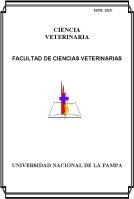Repair of bone segmental defects with bioactive glass and a non-absorbable membrane
Keywords:
Bone, Osteoinduction, RabbitAbstract
The authors inform the repair of segmental bone defects of critical size with the use of a combination of bioactive glass and a non-absorbable membrane of expanded politetrafluoroethilen (ePTF). Twenty four New Zealand rabbits - sexually mature males and females - were used. They were kept in individual cages with controlled temperature and fed ad libitum with a commercial formula. A critical segmental defect in the diaphysis of the radius was created in each rabbit. The defect was filled with bioactive glass granules with a particle size of 300 to 600 um . The extremes of the radius and the granules of bioactive glass were wrapped up with a ePTF membrane. Immediately after the surgical procedure, and every 30 days during a period of 150 days, X-ray controls of the operated limbs were carried out. The rabbits recovered total bearing between 48 - 72 hs. after the operation. After 150 days of treatment, the defects were repaired in all the rabbits. The control X-rays taken after the operation showed that the partic1es of glass occupied the defect had a thin granular shape. Thirty days later, the granules were not differentiated and made up a uniform and radio-dense mass that became more radio-dense in the following radiographic controls. After 150 days the x-ray images showed that the defects were fully repaired. At that moment, the animals were killed to make a macro- and microscopic analysis of the newly-formed bone. The sagittal cuts of the histological tissue that inc1uded the ends of the radius and the newly-formed bone showed that the segmental bone was constituted by numerous trabeculas that contained bone marrow and isolated presence of glass granules. The ePTF membrane protected the bioactive glass granules mixed with the blood clot coming from the cut bone tips. The ionic exchanges between the ions of Ca and P of the glass granules and the same ions of the tissue were evident 30 days after the operation when they fused. Since then, the processes of osteoconduction and osteoinduction started. The scarce presence of granules contained in the newly-formed bone suggest that the granules were absorbed. The bone regeneration was possible due to the protective action of the blood clot of the ePTF membrane and to the osteoinductive action of the bioactive glass granules that unfettered the mechanism of proliferation of the mesenchymal cells and their differentiation into osteoblasts and marrow tissue. The combination ofboth bio-materials fosters the induction ofbone tissue in long bonesDownloads
Downloads
Published
How to Cite
Issue
Section
License
Al momento de enviar sus contribuciones, los colaboradores deberán declarar , de manera fehaciente, que poseen el permiso del archivo o repositorio donde se obtuvieron los documentos que se anexan al trabajo, cualquiera sea su formato (manuscritos inéditos, imágenes, archivos audiovisuales, etc.), permiso que los autoriza a publicarlos y reproducirlos, liberando a la revista y sus editores de toda responsabilidad o reclamo de terceros , los autores deben adherir a la licencia Creative Commons denominada “Atribución - No Comercial CC BY-NC-SA”, mediante la cual el autor permite copiar, reproducir, distribuir, comunicar públicamente la obra y generar obras derivadas, siempre y cuando se cite y reconozca al autor original. No se permite, sin embargo, utilizar la obra con fines comerciales.



4.png)


7.png)



